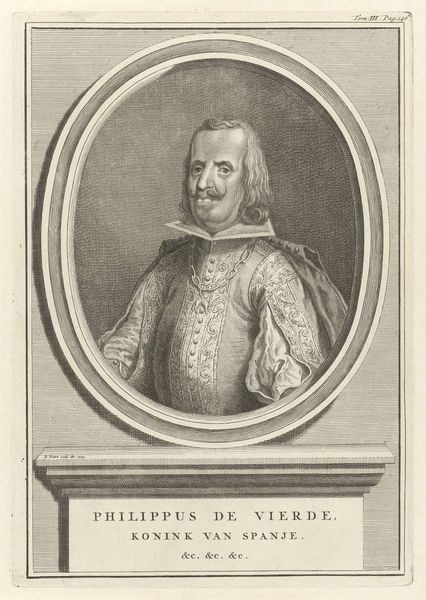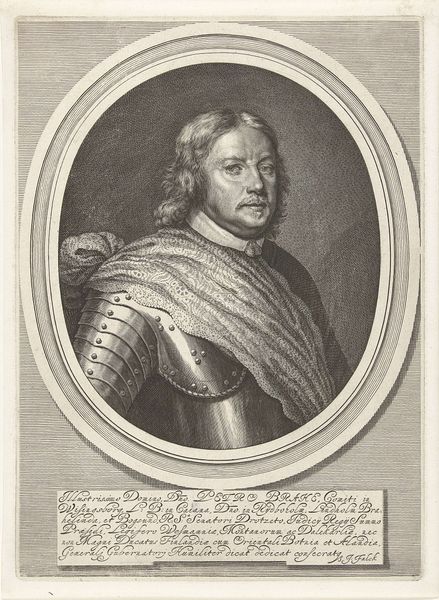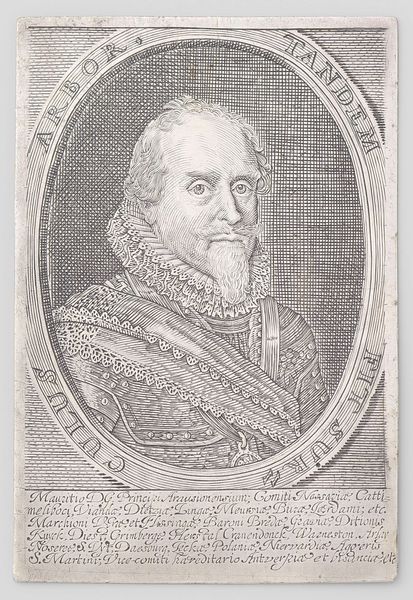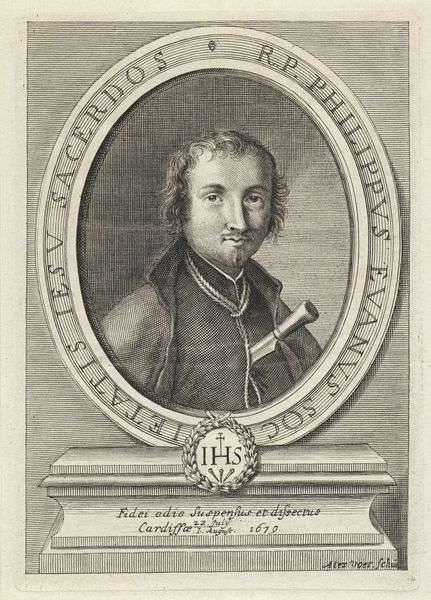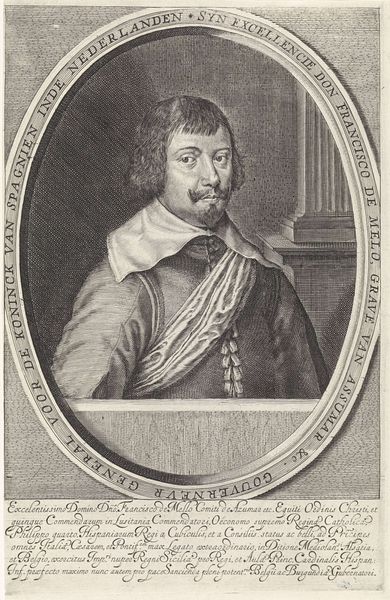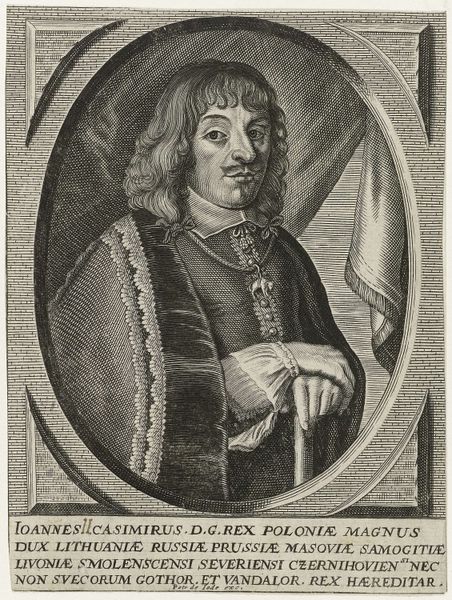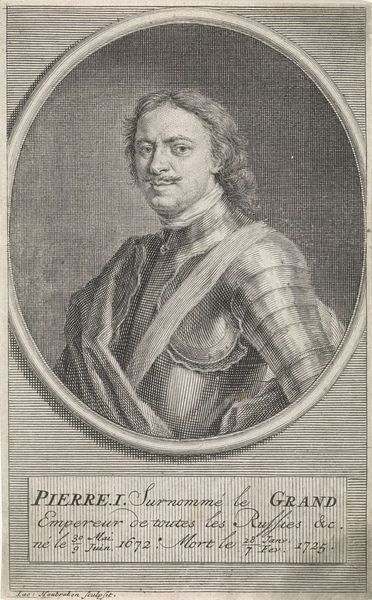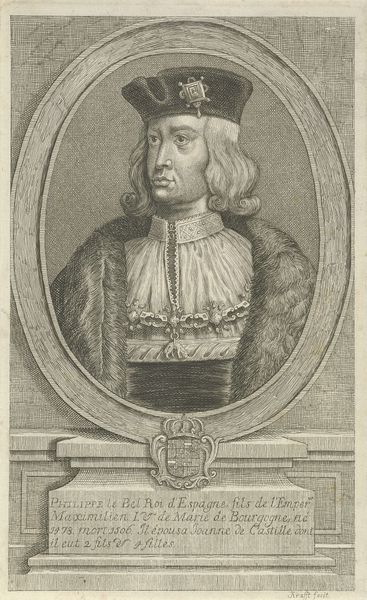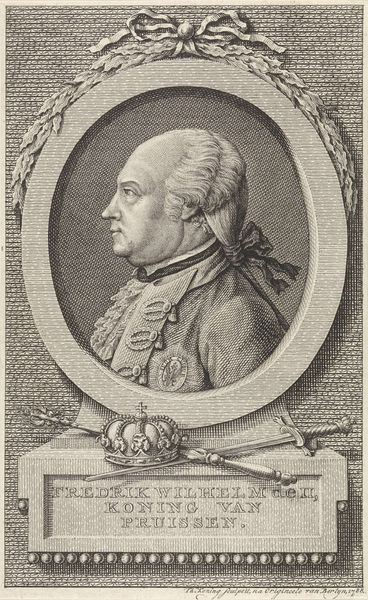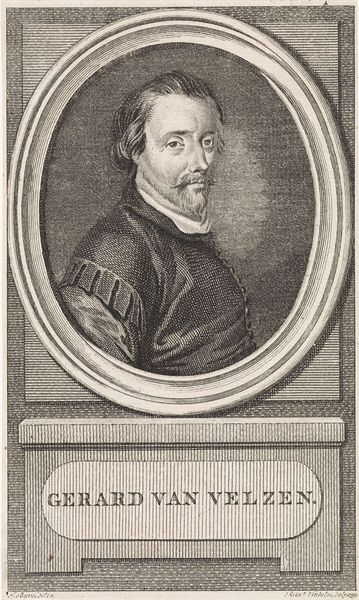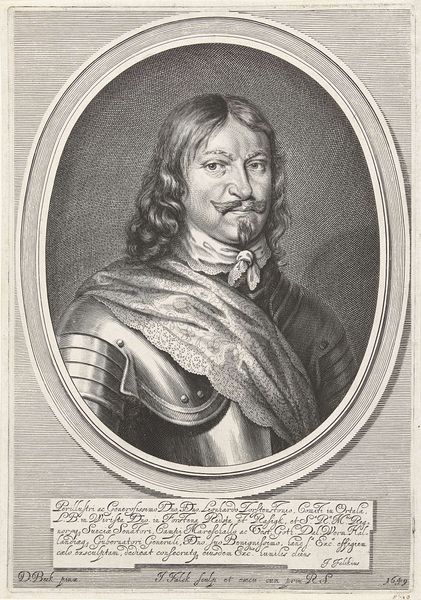
print, engraving
#
portrait
#
neoclacissism
# print
#
history-painting
#
engraving
#
historical font
Dimensions: height 150 mm, width 91 mm
Copyright: Rijks Museum: Open Domain
Editor: Here we have Reinier Vinkeles’s 1790 engraving, "Portret van Aert Jansz. van Nes," currently residing in the Rijksmuseum. It's a powerful portrait, isn’t it? The detail is incredible, considering it’s a print. What historical narratives do you think it's trying to convey? Curator: It absolutely conveys power, and the artist undoubtedly knew how to project status. This portrait, and others like it, reflect the rise of the Dutch merchant class and naval power. How does the portrayal of Aert Jansz. van Nes – his clothing, his bearing – reinforce existing hierarchies within Dutch society at the time? Editor: Well, the elaborate lace collar and decorated sash immediately signal wealth and status. And the text below explicitly names him an Admiral. But doesn't idealizing individuals also solidify the existing power structures, potentially overshadowing other voices and histories? Curator: Precisely! Portraits like these played a vital role in shaping collective memory, but whose memory are we really preserving? We should ask: who *isn’t* represented? Consider how images such as this, disseminated through printmaking, reinforced the narratives of powerful men, often at the expense of women, people of color, and other marginalized groups. What effect might such continuous exposure have? Editor: That’s a crucial point. By constantly showcasing figures like van Nes, we risk normalizing and perpetuating unequal power dynamics. Perhaps questioning these ingrained biases in historical representation is a start toward a more equitable understanding. Curator: Exactly! And considering the pervasiveness of images like this one allows us to better deconstruct power structures both past and present. What further interrogation could portraits like these open up? Editor: It definitely offers a lens to re-evaluate the values and assumptions embedded in art history itself. Thank you! Curator: My pleasure! It's vital we examine artworks not only for their artistic merit, but also their political weight.
Comments
No comments
Be the first to comment and join the conversation on the ultimate creative platform.

